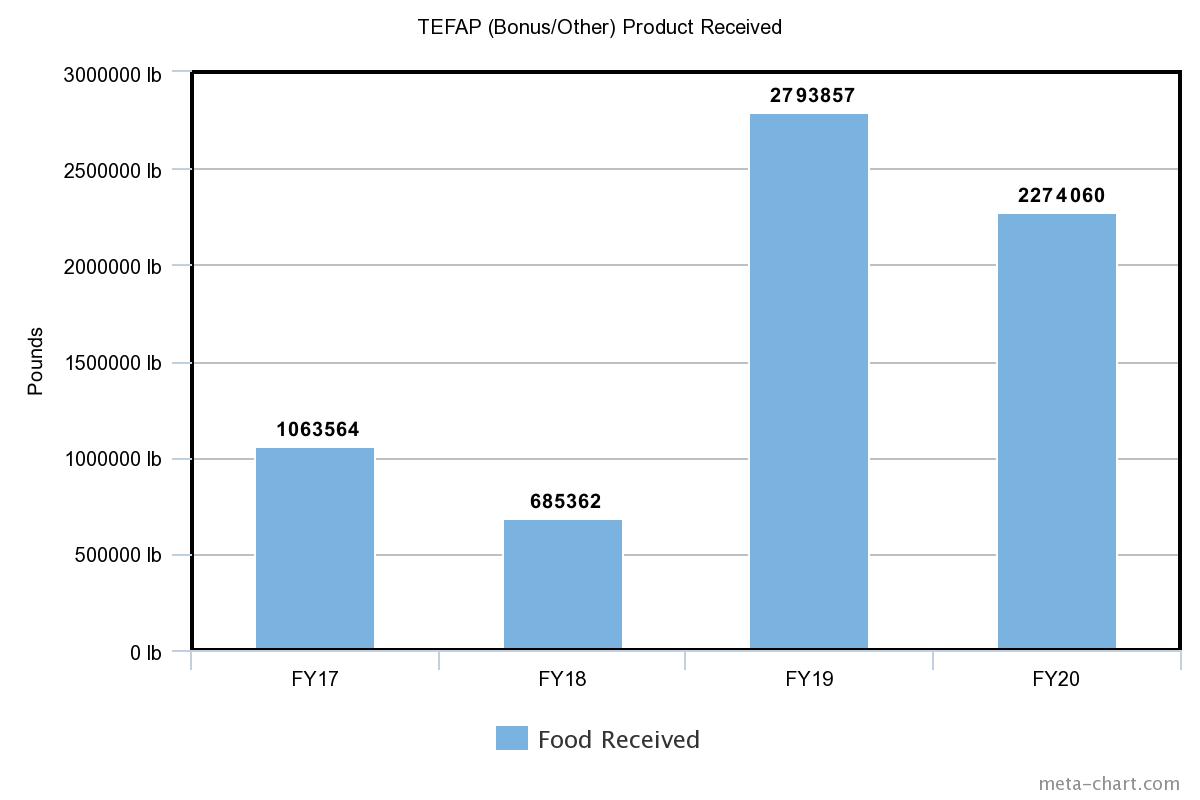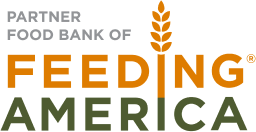What’s the deal with trade mitigation?
The Foodbank receives agricultural surpluses resulting from the Trump Administration’s $1.4 billion Food Purchase and Distribution Program. Here’s what we do with it.
Written by: Emily Gallion, Grant & Advocacy Manger and Caitlyn McIntosh, Development Manager
Hunger relief programs nationwide are familiar with The Emergency Food Assistance Program (TEFAP), which provides a significant amount of food to charitable programs. However, many people are unfamiliar with the program, how it supports food assistance programs, and what impact current events have on the availability of food. We hope the following post will shed some light on the role of TEFAP in The Foodbank’s operations.
In 2018, the Trump administration and the United States Department of Agriculture launched a trade mitigation plan to help farmers affected by trade tariffs enforced by China. This package falls under TEFAP, a larger federal program that purchases unsold food and redistributes it to food assistance programs. This program was launched in 1981 to compensate farmers for agricultural surpluses that were going unsold.
TEFAP food is allocated based upon the number of people living below the poverty line in each state, then sent to food banks, which in turn distribute the product to agencies such as soup kitchens, shelters, and food pantries. Because TEFAP is a federal program, there are special restrictions on which agencies can receive this food. These restrictions vary by state. In Ohio, agencies must attend a civil rights training and complete food safety training, and over half of the population they serve must live at or below 200 percent of the federal poverty limit.
While the purpose of the program is to provide support to American farmers, it also provides a significant portion of The Foodbank’s food. In fiscal year 2019, TEFAP product accounted for 22 percent of all food we distributed.
When the 2018 trade mitigation program was first implemented, it designated $1.2 billion to purchase apples, pork, potatoes, and dairy products. On May 2019, those funds were increased to $1.4 billion for the current fiscal year. The Foodbank and other food banks nationwide are receiving additional TEFAP product as a result. Though TEFAP food is just one of the ways we receive our product, trade mitigation has had a significant impact on the types and amount of food we distribute.
Food we receive through this program is often fresh produce, protein product, and other healthy foods, such as beans and rice. Last year, we received especially high quantities of beans, pork, apples, peanut butter, and fresh milk. In fiscal year 2019, The Foodbank, Inc. distributed over 16 million pounds of food, which was 25 percent more than the previous year. (Many factors outside of TEFAP allocations play a hand in this statistic, including activity related to the Memorial Day tornado outbreak.)
Below is a graph depicting the increase in TEFAP food received by The Foodbank, Inc. before and after the mitigation package was launched. This data reflects all TEFAP food designated as “bonus/other” by our inventory system, which includes some product that is not purchased through trade mitigation, but trade mitigation is ultimately responsible for the upward trend. Despite the fact that we are just over halfway through our fiscal year, we have received almost as much food in this category as last year.

The trade mitigation program provides a bounty of fresh food, especially high-demand products such as fresh meat. However, the influx of perishable food can pose unique challenges, especially when we receive large quantities of a single product, such as the over 61,000 pounds of garbanzo beans we received this fall.
Turning over redundant loads of product can be difficult, so we have to find solutions to encourage our agencies to pick up trade mitigation product or find additional storage. The increase in trade mitigation product is one of the driving reasons we are currently ordering more shelving. We have also had success with more creative methods of distribution with our own direct service programs, especially our on-site Drive Thru.
The Foodbank’s Drive Thru opened Summer 2018 with funding from Dayton Power and Light. The format has several advantages. First and foremost, it enables clients with mobility issues to obtain food without having to leave their vehicles or carry heavy boxes. We also envisioned it as a way for clients who have already received their maximum allotment from other pantries in our network, which often place limits on the number of times a household can visit in a month.
However, because our Drive Thru is built into our warehouse, it has also proven an important mechanism for distributing products we receive in large quantities. The Drive Thru has become an integral part of our hunger relief strategy. Last fiscal year, the Drive Thru had an attendance of 33,463 people. The Drive Thru was especially critical to our response to the recent tornado outbreak: our monthly attendance reached an all time high of 9,085 people served in June, the month following the disaster – over 5,000 greater than the previous month.
The USDA has not announced a trade mitigation plan for the next fiscal year. As an emergency relief organization, we are always preparing for an ever changing environment and will remain alert to adapt to future changes.





No comment yet, add your voice below!